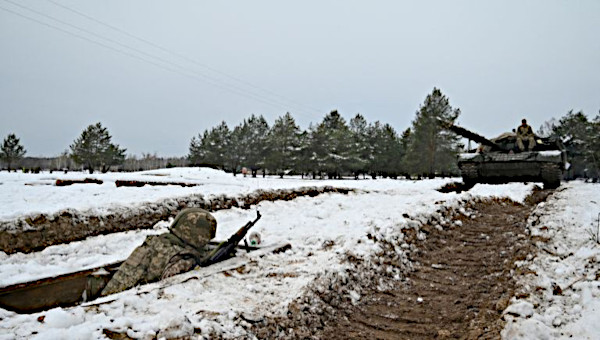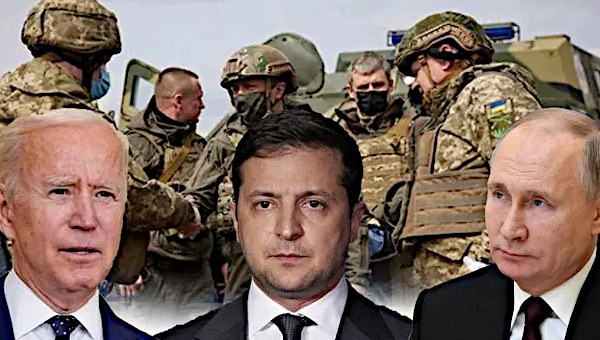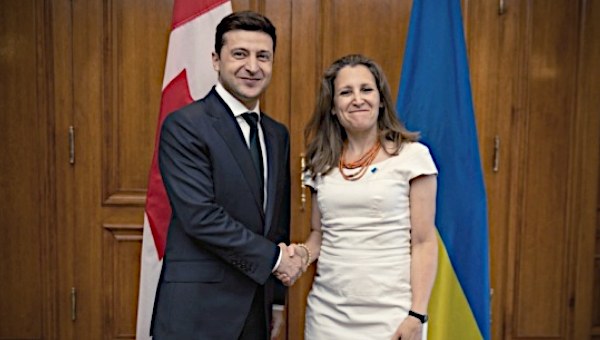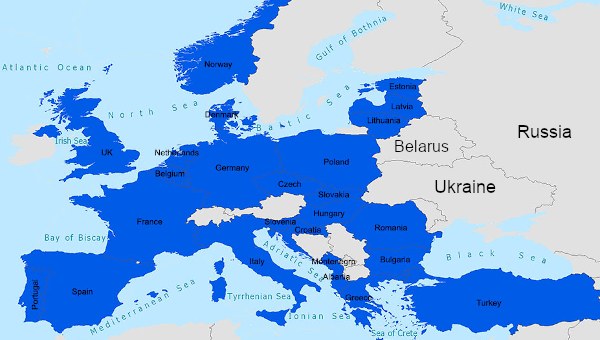Contradictions of Post-Soviet Ukraine and the New Left
Ukraine ended the 1980s as one of the most advanced parts of the Soviet super-power with a developed machine-building industry. Thirty years later, Ukraine’s major economic indicators are on a par with many Third World countries. The country is fundamentally dependent on the financial, political, and military support of the West, with politics dominated by a handful of powerful oligarchs, right-wing paramilitaries regularly marching on the streets, and a part of the country annexed by neighboring Russia and another part torn through by the frontline. It can rightfully be called the northernmost country of the Global South. Moreover, there is not any relevant political force with a vision of alternative progressive national development.
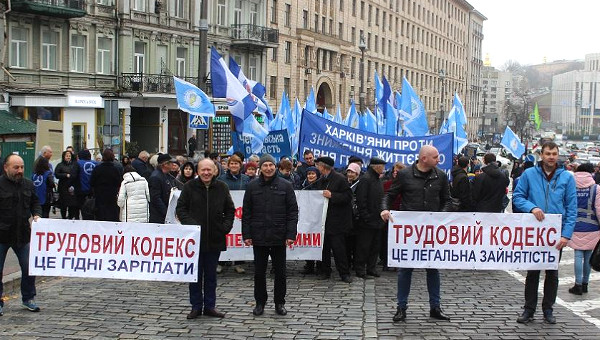
Several profound contradictions have defined the dynamics of the Ukrainian economy, politics and society since the collapse of the Soviet Union: the contradiction between transnational and local capital, those between factions of the local capital, Ukrainian national identity contradictions, geopolitical contradictions with Russia, the US, and EU, and contradictions between civil society, the active public, and Ukrainian society at large. I will first expose them, and then discuss how the Ukrainian new left has been failing to respond to these contradictions with a project for Ukraine’s alternative development.
The Major Contradictions of Post-Soviet Ukraine
Since the 1990s, Ukraine joined the global trend of neoliberalization. As in many other countries, privatization, deregulation, and liberalization drastically increased social inequality. Yet, Ukraine did not see the inflow of foreign direct investment and the overtaking of the economy by transnational capital. Rather, ‘insider’ privatization of former Soviet state property produced a local ruling class of so called ‘oligarchs’ who made their fortunes in primarily extractive and low added value export-oriented production. Their major resource was the tight informal connections and selective preferences of the current ruling group in the government. The attack on corruption that has been pressed by Western governments and civil society loyal to their position was primarily aimed at eliminating the oligarchs’ competitive advantage, enforcing transparent rules of business, and opening Ukraine for transnational capital. This is why neoliberalization, at least until the Maidan uprising in 2014, proceeded relatively slowly, gradually, and contradictorily.
For example, legislation in some of the key areas like those around housing and labour issues has remained based on Soviet laws from the 1970s. The prices for utilities had been heavily subsidized for households – a target of regular criticism by the IMF. At the same time, being dependent on selective preferences of the state and risking property, finances and freedom in case of the change of power, local capital had little incentive to invest into modernization and instead has been hiding its money in tax havens not waiting for too risky long-term returns. The remnants of developed Soviet-age heavy industry could therefore hardly win new markets beyond the ex-USSR and some countries of the Global South. Capital flight, massive tax evasion, and a huge shadow economy contributed to the systematic underfinancing and gradual degradation of Ukraine’s public sector, including healthcare, education and welfare institutions.
The contradictions within local capital were also sharp, provided the role of informal selective state preferences in its businesses, and have led to a very turbulent politics in the country. Each major ‘oligarchic’ financial-industrial group attempted to control a parliamentary party or a group of loyal MPs. Each major group tried to influence public opinion with popular TV-channels. The intra-class hegemony within the ruling class has been very weak. Every attempt to monopolize power ended in successful popular and elite counter-mobilization. During the life of just one generation Ukrainians have experienced three ‘revolutions’ – at least in the technical meaning of changes of power combined with popular mobilization – in 1990, 2004, and 2014. Unlike in neighboring Russia or Belarus, no faction of the ruling class has been able to consolidate its power. The political regime has remained pluralistic and competitive, despite all of the anti-democratic features and tendencies.
Weak intra-class hegemony led to weak inter-class hegemony. No class or faction of a class could plausibly claim moral and intellectual leadership of the nation. The regional political split of Ukraine has been widely debated since the Maidan uprising of 2014 and the subsequent war in the eastern region of Donbass. Some have tended to essentialize the differences between “Western,” Ukrainophone, pro-EU, and “Eastern,” Russophone, pro-Russian Ukrainians. Furthermore, they have been regularly instrumentalized and sharpened for electoral purposes by the competing political elites. Yet, the divergent ethnocultural, linguistic, religious practices and consciousness, historical memories, and political attitudes among Ukraine’s regions did have real historical background. Besides, there was also a socio-economic dimension to the regional divergence with concentration in the southern and eastern parts of Ukraine of the heavy Soviet industry dependent on the markets of Russia and other ex-USSR countries.
Moreover, contradictions lay in the core of the very Ukrainian national identity. There has been nothing close to a consensual or even a hegemonic position within Ukrainian society on the questions of what Ukraine and Ukrainians are and what they should be in the future, how they are different from Russia and Russians, or Europe and Europeans. In the beginning of the previous century, in this land, “Ukrainian” was almost equal to a peasant, with the cities dominated by Russian, Jewish, and Polish populations. Early 20th century Ukrainian Marxists were very attentive to the interconnection of social and national oppression. Yet, after Soviet modernization and affirmative action, under the independent Ukrainian state, and, particularly, after the Maidan uprising of 2014, it is not obvious at all which nation in Ukraine is currently ‘oppressed’. Now the representatives of both pro-Western and pro-Russian camps can mobilize national-liberation and anti-discriminatory frames, yet at the same time accepting and justifying subjugation to one or another contending imperialist patron.
The conflict about Ukraine between Russia and the Western countries of the capitalist core (primarily US and EU) has come to the fore since 2014. The contradictions may be characterized as ‘imperialist’ if only we specify what ‘imperialism’ means on both sides. For Russia, Ukraine has been important primarily because of natural gas transportation to Europe, for military security, and for Russia’s self-perception as a great power. EU is interested primarily in a cheap Ukrainian labour force, natural resources, and a consumer market, but not for investment insofar as Ukrainian oligarchs are not tamed and the war in Donbass continues to be a major risk factor. For the United States, Ukraine is primarily a tool to weaken the Russian challenge to American global hegemony. On each side of the conflict there are different factions within the ruling classes with more ‘hawkish’ and more conciliatory positions, for which class analysis is something yet to be done.
The last but not least contradiction important for understanding post-Soviet Ukraine dynamics, is between Ukraine’s civil society and Ukrainian society at large. Ukraine’s civil society has been notoriously weak even by low East European standards. The instances of mass mobilizations and ‘revolutions’ did not form stable institutions of civic self-organization. Most participants remained alienated from the ‘dirty stuff’ of politics. 80-90 per cent of Ukrainian citizens have been stably declaring no participation in any civic or political organization whatsoever. The ‘oligarchic’ electoral machines dominate in parliamentary politics.
For many years the Communists were the largest mobilization party with massive activist, not just paper, membership. Yet, their mobilizing strength has been fading as a result of opportunist party leadership. After anti-Communist repressions since the Maidan uprising, the party basically stopped any public activity. This resulted in a peculiar structure of Ukraine’s active public since 2014 becoming dominated by two major segments: the ‘liberal’ segment of professional think tanks, media, and advocacy organizations boosted with Western donor money, yet with little grassroots mobilization, and the radical nationalist segment that has built party organizations with the strongest (as to the low Ukrainian bar) mobilization potential and has accumulated extraordinary paramilitary resources thanks to weakening state institutions. These segments are interconnected with liberals who typically tolerate and legitimate radical nationalists seen as ‘patriots’ fighting against ‘Russian aggression’ and internal ‘traitors’. They are hegemonic within the civil society, but, because the civil society is weak itself, they cannot claim hegemony in the society at large. The majority of Ukrainians have remained socially paternalistic, averse to neoliberal proposals and in the majority indifferent to nationalistic claims. The landslide victory in the recent presidential elections of an inexperienced comedian Volodymyr Zelensky over a veteran of Ukrainian politics and one of the richest individuals in country, Petro Poroshenko, who balloted on an aggressive nationalist platform and was supported by the majority of civil society and national-liberal intellectuals, exposed this political chasm between the active minority and passive majority.
The New Left’s (lack of) Response
So far, the new left in Ukraine has been failing to respond to these contradictions both politically and analytically. This failure has contributed to the new left’s continued marginalization.
The new left groups in Ukraine, as in many other parts of the Soviet Union, appeared in the late 1980s as a part of perestroika movements. With the start of the severe economic crisis of the 1990s, these movements demobilized and the new left remained primarily in the form of small political sects and subcultural groups: Trotskyist, Maoist, anarchist etc. The key question for them and the major lines of discussions were not so much about post-Soviet capitalism and Ukraine’s contradictions but about what the Soviet Union was. A version of a critical position toward the USSR defined the opposition to the ‘old left’ Communist party of Ukraine as well as of the different groups to each other.
The so called “Orange Revolution” against the attempt to steal the presidential elections in 2004 by ‘pro-Russian’ Viktor Yanukovych from ‘pro-Western’ Viktor Yushchenko produced a new political situation. On the one hand, many new, and particularly, young, people came to politics. Specifically, local urban activism was galvanized. On the other hand, many of these people were becoming more and more skeptical toward the major political forces, observing no revolutionary change after the ‘revolution’ but instead, compromises and strategic agreements between the rivalling ‘oligarchic’ camps. Some of these newly politicized young people were drifting toward the left, where they met radical splinter groups from the ‘old left’ parties, who were disappointed with the opportunist leadership that aligned itself with one or another major ‘oligarchic’ camp. At the same time, the small radical left sects were trying to de-marginalize and started actively intervening into local social protests.
As a result, the new left’s attention was focused on the particularistic problem of specific social groups. In some cases, for example, within student protests, the new left reached at least temporary success, noteworthily benefiting from the weak civil society and low mobilization potential of the mainstream student organizations. However, analytically, these specific problems were approached employing concepts and arguments from the Western left that rarely reflected in-depth specifics of post-Soviet neoliberalism and capitalism. At the same time, the crucial contradictions, foremost, the national and geopolitical, within and about Ukraine, were largely perceived as ‘pseudo-problems’ that rivalling ‘oligarchic’ camps employed to divide Ukrainian workers of the “East” and of the “West” and distract them from their common class interests.
This left Ukraine’s new left movement largely unprepared to deal with the Maidan uprising of 2014 and the following war in Donbass. Failing to provide their own analysis of the exacerbated Ukraine’s contradictions, they accepted right-wing answers. Instead of opposing nationalist mobilizations and counter-mobilizations, most of the new left joined either Maidan, “pro-Western,” “pro-Ukrainian” or Anti-Maidan, “pro-Russian” nationalist camps as marginal supporters. At the same time, they could not contribute any critical resource to the movements – unlike ‘oligarchic’ parties, liberal NGOs, or radical nationalists – and, therefore, the new left did not make any significant impact on the the agendas or consequences of the movements. As a result, the new left did not shift those mobilizations to the left but rather themselves moved toward nationalist positions.
Marginalization of the ‘old left’ Communist party after the Maidan uprising did not benefit the new left. Repressions, and particularly the violence of the empowered and legitimated extreme right touched the new left as well. Besides, they were stigmatized as ‘pro-Russian’ and weakened by severe internal splits. Membership in new left groups, their public activity and even communication significantly dropped; they are now, perhaps, on the lowest level than any time since emergence of the socialist movement on what are nowadays Ukrainian lands in the XIX century.
Prospects?
The stunning electoral victories of Volodymyr Zelensky and his virtual party “Servant of the People” in 2019 demonstrated a profound crisis and lack of legitimacy of Ukrainian political, economic, and intellectual elites. They have also confirmed the predominance of personalistic political culture with little attention to the programmatic ideas and political organizations. The new government and the first legislative proposals indicate that the ‘new’ elite will continue to maneuver between transnational capital and local oligarchs. Lacking any real party or movement behind Zelenskyi, government positions are staffed with representatives of the liberal segment of civil society, second- or third-rate officials from the previous government, and oligarchic lobbyists.
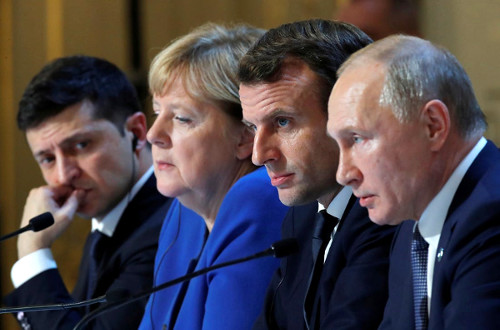
The policies of deregulation, ‘anti-corruption’ and privatization in order to attract foreign investors will be limited only by the special interests of the oligarchs close to the government. The president and government officials have been also regularly conceding to the pressure of radical nationalists. The latter enjoy only a minority support within society, yet are very active and well-organized and, moreover, legitimated by liberal civil society. Overall, the new government’s policies have not broken with the trap of dependent development of a capitalist periphery. Sooner or later the search for a radically alternative project of national development will be back on the agenda.
Yet, the new left, as it is now, will hardly be able to respond to this demand with in-depth analysis and serious strategic proposals. The new left activists remain in the comfort zone of convenient topics of specific groups of the active public (urban initiatives, feminist, environmentalist, some labour unions). This is because they remain politically, financially, intellectually, and affectively dependent on the marginal left-liberal segment of Ukraine’s civil society. Moreover, uncritical acceptance of the ‘movementist ideology, popular among contemporary liberal and libertarian left, is counter-productive for Ukrainian new left. If the various ‘new’ and single-issue movements have massive following in the West and help to enhance the reach of left political agenda, their analogues in Ukraine hardly represent wider social groups. Seeking recognition with the activists of small organizations within weak civil society, the new left rather marginalizes itself even more as it remains detached from the concerns and political culture of Ukraine’s passive majority. In this respect learning from Corbyn’s, Sanders’, or Melenchon’s and even more so of the Third World progressive leaders’ effective articulation of the national interest could be much more instructive.
This failure of the Ukrainian new left’s strategic analysis is an expected consequence. Despite some important data collection, the new left has been failing to suggest an integrative analysis and consistent solutions for the major contradictions of Ukraine’s society which are essential for addressing a nation-wide public beyond specific group interests and for any serious political strategy in general. Neither systematically underfinanced Ukrainian academia, nor the more than marginal new left movement, nor specific interest groups in the weak civil society can support or even formulate a demand for such analysis. The short-term project-oriented funding of the left-leaning Western foundations is also not conducive. The most interesting analysis of the contradictions discussed above have been so far proposed by people affiliated with Western academia and not even necessarily with left-leaning political orientations.
Where might a social demand for a left analysis in Ukraine come from? One of the positive consequences of Zelensky’s victory has been politicization and mobilization of ‘no-voters’, particularly, young people in the big cities of south-eastern regions. Disappointed with the old policies of the ‘new faces’ in the government, many of them may search for alternative substantial answers to the urgent questions of Ukraine’s national development which they will not find from national-liberal intellectuals and civil society. The latter will be losing their influence even more as the crisis of the world-system will be deeper and cracks in the institutional pillars of American hegemony and the neoliberal global order will be wider. At the same time, new political forces in Ukraine (emerging not necessarily from the new left milieu) will be positioning themselves as representatives and speakers for the ‘betrayed’ majority. Political success of the left parties and leaders in the key core capitalist countries will certainly increase interest in their policies and ideologies locally and will legitimate framing of Ukraine’s majority’s interest in a left-wing progressive way. Then, the contradiction between capital and labour, the fundamental for any capitalist society, yet not articulated in Ukraine so far, will finally get its political representation in this land. •
This article first published on the LeftEast website.


